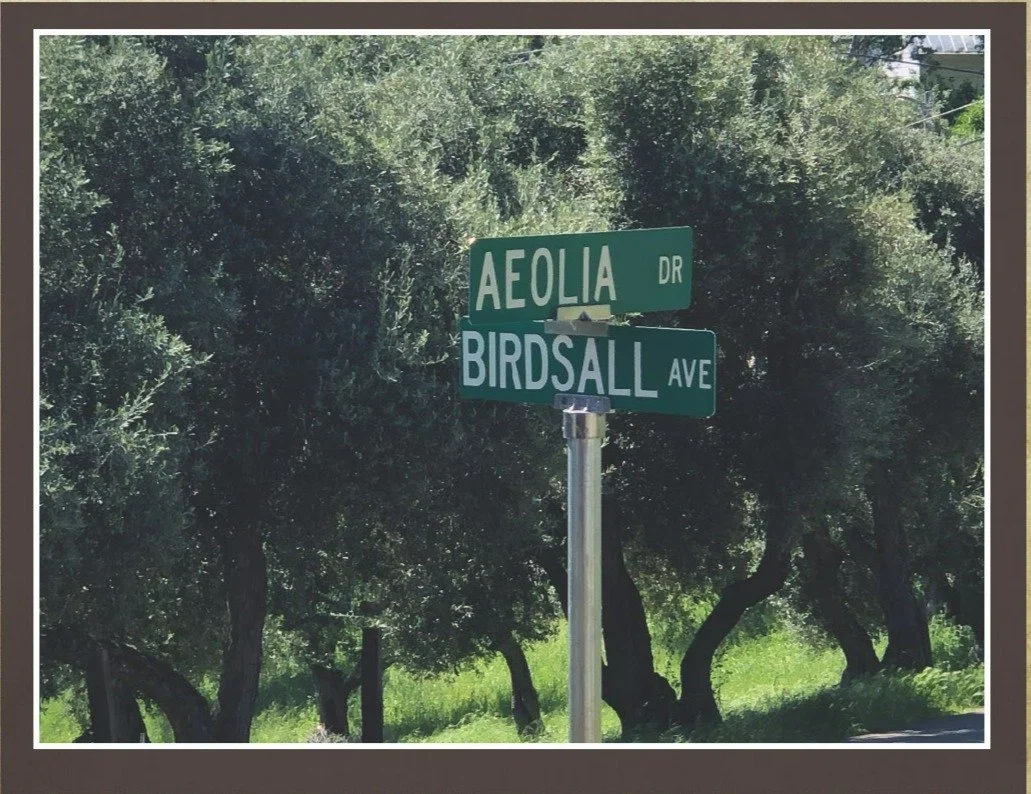Aeolia Olive Orchard STORY BY CHRISTINA RICHTER PHOTOS AND REFERENCES BY KIM HASWELL AND THE HASWELL FAMILY COLLECTION
Olives are mentioned throughout history. Even the Bible has more than 25 references to the olive tree. The slow-growing tree will start to produce fruit about seven years after planting, but it takes a full 65 years to reach their maximum yields. For this reason, it was common for a father to pass his olive orchard along to his son. This was the case with Frederick Birdsall and his son, Ernest.
Frederick Birdsall was a 22-year-old when he journeyed from his home in New York to join the excitement of the California Gold Rush. Initially, he found employment in Sacramento but by 1860 he was part of the profitable mining activity on the Foresthill Divide. In 1875 Frederick took his earnings and bought the Bear River Ditch company, then expanded the water system to cover more than 300 miles of ditches and waterways. He also improved a narrow-gauge railroad affiliated with his mining operations, which he would sell for a handsome profit in 1888.
1888 was the magical year that Frederick, along with a partner, purchased 70 acres of exquisite canyon land, 1,000 feet above the American River, just east of Auburn. Over the next several years, the land would be developed, and 5,000 olive tree seedlings would be planted. Frederick and his wife, Esther (Stratton), built a grand home among the young trees and called their sprawling estate Aeolia Heights.
The Birdsalls were blessed with five children, and all enjoyed the beauty of the land which lay just outside the city limits of tranquil Auburn.
Today, Aeolia street names are named after early Auburn Birdsall family members.
The olive orchard venture was growing, but Frederick became ill and died in April 1900. Upon his death, his son Ernest would take on the responsibility of operating the orchard.
As the trees grew to maturity and full production, Ernest developed and expanded olive oil production. Birdsall Olive Oil would win seven first-place awards between 1903 and 1911. The Birdsalls were fast becoming a significant contributor to Placer County’s rapidly growing fruit industry.
The working buildings, warehouse, packing shed, olive pickling vats and the stone press house were all located on the road that would become Aeolia Drive. Ernest continued to manage the orchard and the company until his death in 1935. In 1936, Wes Haswell, the husband of Ernest’s daughter Thirza, became director and manager of the business.
The company name was changed from The Birdsall Olive Oil Company to the Aeolia Olive Oil Company under Haswell’s management. The thriving company would continue until the 1950s, when foreign imports of olive oil created a negative impact for domestic sales. For the next 20 years, the company primarily sold cured olives as gifts during the fall and winter holiday season. Finally, in 1970, the operation ceased.
Today, the sprawling hillside is home to elegant houses that reflect distinctive design eras. The old stone building is lovingly cared for as a private home with a plaque to commemorate its bygone days. Trails through the neighborhood offer a peek over the canyon onto the rushing river far below. But the strongest reminder of the once prize-winning orchard are the remaining olive trees, still thriving, that are now well over 100 years old






